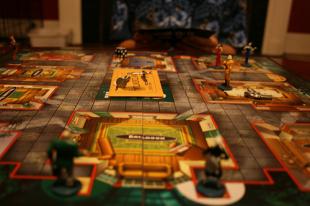In my early days of building learning for performance support, I used to call myself “the McGuyver of training”. We didn’t have a learning management system and online social networks and rapid authoring tools were in the future. The development tools of choice were Microsoft Word, flip charts, masking tape, Mr Sketch markers and screen shots of mainframe computer screens. Even back then, we found ways to use games to make learning and practicing complex sets of new skills fun.
Nowadays, it’s easy to get caught up in all of the available tech tools and forget that it’s the activity itself – online or off -that determines the success of the learning experience. And more importantly, the outcomes.
Get a Clue
As a young corporate trainer I was presented with a big challenge: Client relations representatives needed to be able to accurately interpret the data sent from our company’s mainframe to the three main credit bureaus. In other words, make the complex digital data that associates were literally scared to work with, readable and less scary.
The solution: As a child, my sister and brothers and I loved to play Clue. This inspired me to create Get a Clue: Solving the Mystery that is Credit Bureau Reporting. This simulation game required the associates to explore the various job-related forms, mainframe screen shots and system codes, mocked up data and resulting credit bureau reports to “solve” the murder mystery.
This game brought a complex, dry and mandatory attendance program to life for the associates. The game sheets and information used to solve the various mysteries also became the associates’ own job aids for their use in the future.
The Interactive Interchange Game
The need: Explain the various steps in the process of how a credit or debit card issuing financial institution gets paid when their cardholders use their cards to pay for goods and services. Specifically, the various entities involved, percentages, etc.
The solution: the Interactive Interchange Game, where volunteer attendees chose to play the part of one of the various elements or phases, by physically walking through a typical purchase transaction for their peers. Key questions were asked and correct responses made it possible for “the purchaser” to advance to the next phase.
Four Tips on Putting Games to Work
There are LOTS of ways of incorporating games into training and learning. Some favorites:
- Relay and “Jeopardy” -style training session reviews are a lot more fun for the attendees than a boring old quiz or test. I like to do them in teams and allow the group to collaborate on their responses. Back in the day, we used an overhead projector with the smallest Post-It’s and classroom bells or noisemakers to ring in. Now, there are lots of free .ppt templates available making it all look high tech and fancy. However, what makes it effective is solid instruction and reinforcement of the content/concepts so the attendees are able to be successful and “win” the “game”.
- Safety Scavenger Hunts and Safety Bingo are used in most of our 648 senior living buildings, as a way to re-engage our associates with things to watch out for and report to stay safe at work. Team-based incentives are built into the program. For example, meeting/exceeding a goal of XXX days worked without a workplace injury or accident results in a meal, leadership taking pies in the face, etc. And individual associate prizes like new uniform shirts and “shoes for crews” are offered on a quarterly basis according to the published targets and goals.
- Marshmallow Wars isn’t so much a learning game but used for celebration at the end of a stressful project. I’m pretty sure your associates have never laughed this hard at work. Note: I suggest you don’t tell the Legal Dept you’re doing this, outside, on company time. In fact, I usually keep the fact that I’m doing this a secret right up until the moment it happens. Having an element of surprise is always more fun!
- “Who Am I?” is the party game where you find your “match” with someone else in the room by asking only yes and no response questions to find out what is on the note on your back.
So think about it. While everything I’ve written about here is for face-to-face, classroom instruction, this approach can also be applied to digital learning. Which games did you like to play as a child? Annie, Annie Over, Freeze Tag, Dodge Ball, Monopoly™, Chutes & Ladders—all are possibilities for immersive learning experiences. Dust off those skills and bring them into workplace learning. I wrote about it here, having never mentioned the words “gamification” or “avatar” once.
Dawn Mahoney is the Manager of Divisional Learning & Development at Brookdale Senior Living. Find her on Twitter (@dawnjmahoney) or on LinkedIn.
Image credit: Bryan Gosline on Flickr






